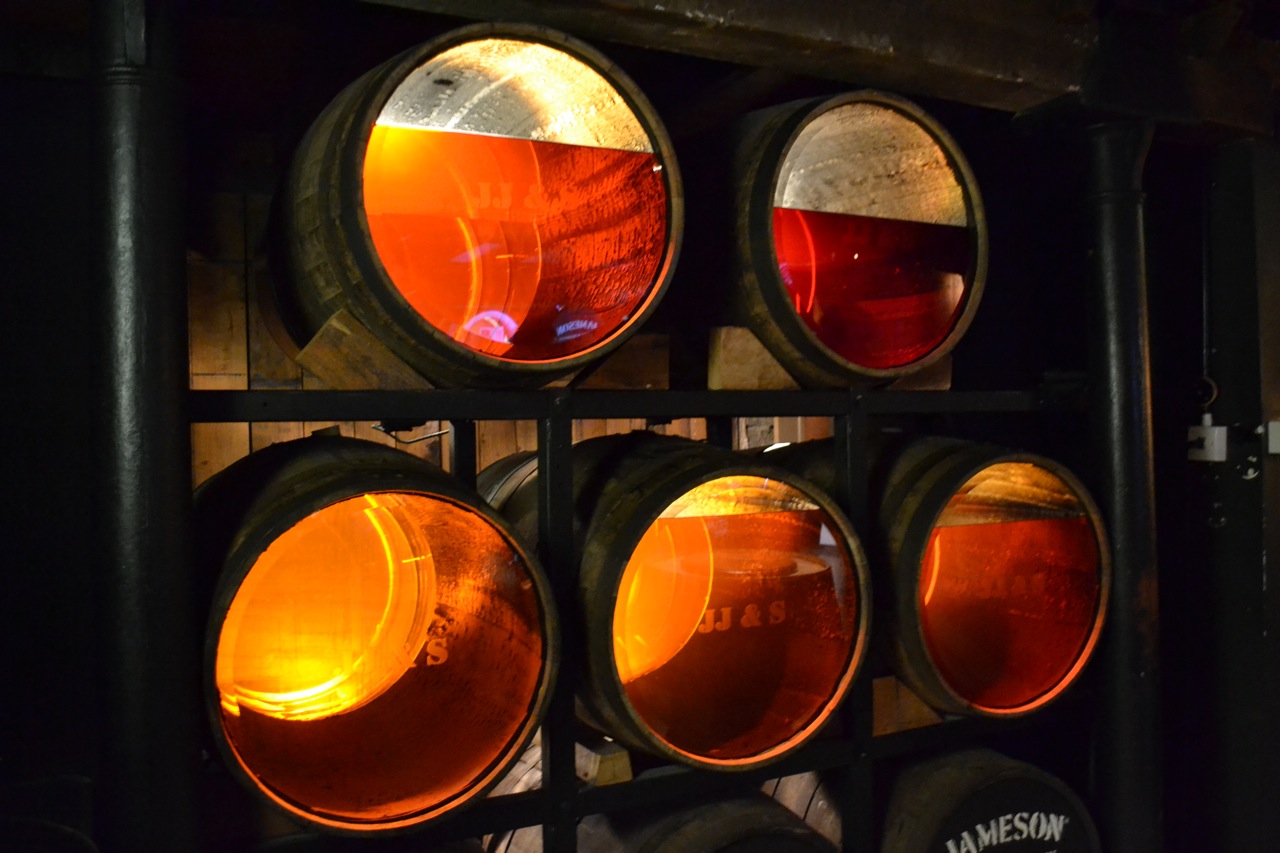How does the angel’s share affect my whiskey?
A lot of different things affect the flavors in whiskey, not least of which is the addition of water or loss of ethanol from the barrel. The “angel’s share” is the loss of alcohol from evaporation during the aging process. Depending on where and how a whiskey is aged will determine how much is lost. (or how much water is gained)
Barrels “breathe”. They are watertight, but molecules of water and ethanol will move in and out. If the microclimate within the barrel changes due to external temperature or humidity changes, the pressure within the barrel will change as well. Anyone who owns a glass barometer knows that pressure affects liquids. The change in the microclimate pushes water and alcohol into or out of the wood. American barrel warehouses have been designed to harness this phenomenon. Jim Beam’s Booker Noe knew to orient his warehouses on a north-south axis to give the sides of his warehouses more sun exposure during the day. Heat the barrels, and change the speed at which the booze moves in and out of the wood.
In America, the loss of alcohol can be 4-7% a year due to evaporation.. In Scotland, it tends to be closer to 2%. The climate in Scotland is cooler and damper. On the west coast of Scotland, a cask can actually gain 5 liters of water over four years! The cooler damper conditions will actually cause more loss of ethanol and more gain of water. In hotter conditions, like those in Kentucky, (especially in metal sided warehouses that encourage higher temps), more water will be lost through evaporation raising the percentage of alcohol in solution. A 50 year old scotch can lose up to 75% of its contents by the time it’s bottled. This year, Buffalo Trace’s antique collection’s George T. Stagg lost 84% of its volume to the angels after only 15 years.
More evaporation means more area for oxygen to move into the barrel. Sulfur compounds that weren’t pulled out in the distillation process now have a chance to evaporate or create molecular bonds that make them less noticeable in the finished product. Oxidation of alcohol forms acetaldehydes (those apple flavors) and acetic acid (green apple, vinegar, paint aromas). Ethanol molecules, over time actually begin to clump together when they come in contact with water which makes the ethanol less obvious in the resulting flavor of the whiskey, giving the “smooth” descriptor to your booze. These clumps of alcohol molecules tend to stick to volatile compounds making them harder to smell when you’re nosing your whiskey. Adding water and swirling your whiskey can help break up those bonds and free those volatile compounds so you can smell them again.
